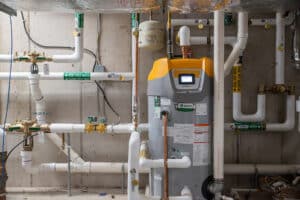As professional sports franchises have become more and more profitable, the pressure on teams, players, coaches, and owners to win has reached a higher level than ever before. On the surface, professional athletics and engineers may not have much in common, but if you dig deeper into what allows for professional leagues, players, and teams to be successful, you start to realize there are valuable lessons that engineers can take away from athletics.
1. The Importance of Analytics
Every franchise in every sport is looking to gain any competitive edge they can over their opponents. The most popular new “edge” has been analytics. Professional franchises are investing big money into highly intelligent analytics departments to help with every decision made for the team. The players selected to the roster, the exercises and practices, and game-day coaching decisions are now all heavily influenced, if not decided, by the analytics departments of these franchises. Every small area of the sport can be analyzed with numbers and data, and using these numbers and data to understand and exploit patterns has given those with elite analytics departments a competitive edge.
Engineering, in its simplest form, is translating numbers and calculations into buildings, machines, and structures. To some, it may seem that engineering is analytics, and could not possibly need any more numbers involved. But engineers can look no further than the baseball game on the television to learn valuable lessons about analytics. Those in engineering who embrace new technologies, such as 3D laser scanning, which can create new numbers to analyze and understand, may reap the rewards, just as the early adapters of analytics in sports did.
2. Willingness to Improvise
As COVID-19 put the world on pause in early March, every professional sports league in North America ceased play for an uncertain amount of time. It was an unprecedented situation, and nobody knew how long it would take for the professional sports teams they loved to return to play. At first, many fans scoffed at the idea of watching basketball or baseball with no fans in the stadium, but as time went on, it became clear that fans were desperate for sports in any form. Rather than sitting around and waiting for the pandemic to end, major American sports leagues got creative, and new strategies and technologies were used to create “bubble” leagues like the NBA and NHL. While there may not be fans in these “bubbles” the fans at home have enjoyed being able to watch sports again, and these leagues are being rewarded for their willingness to innovate.
Just like athletics, engineers have been operating for hundreds of years without any sudden, drastic changes to their process. Innovation generally comes slow, and the standard practices of the field can sometimes make projects seem monotonous and repetitive. Just as it did for professional sports leagues, the pandemic caused many projects to be delayed, put on hold, or cancelled, due, in part, to the steps needed to take place in engineering. It is important for engineers to always be willing, just like the professional sports leagues, to adapt, innovate, and overcome challenges posed by COVID-19 as well as other new factors. Those willing to compromise, stray from their routine, and innovate will reap the rewards, while those stuck in their daily pattern may struggle.
3. Always have plans A, B, and C
Before any big matchup, coaching staffs and players will work tirelessly to implement a complicated and effective game-plan to expose the weaknesses of their opponent and emphasize the strengths of their own team. Unfortunately, no matter how well planned, this first game plan does not always work. Unsuccessful teams may give up when this first game plan fails, but great teams, like the Patriots in the NFL, or the Golden State Warriors of the NBA, are famous for having multiple back-up plans contingent on what strategies the other teams decide to use. Having multiple, thorough, game plans allows for teams to be prepared for success regardless of how many different situations they could find themselves in.
Engineers can learn from this type of thorough and intensive game-planning for their projects and builds. In order to be successful regardless of complications, it is important for engineers to have multiple plans in place so that they are prepared to stay on schedule, regardless of complications and changes that may be thrown their way. Good engineers may have a plan A, but great engineers must at least be willing to design and for plans B and C as well.At VIP structures, our engineers have taken these pages out of the books of great sports teams. We are using brand new technology, like 3D laser scanning, to better understand and analyze our environments, and engineer builds that work flawlessly within these environments. Our engineers have been willing to understand the “new normal” within the pandemic and improvise building patterns and necessities to complete projects in the world of the Pandemic. And beyond this, our engineers are always incredibly prepared for any project, with multiple potential plans in place, not just a plan A.
ABOUT VIP STRUCTURES
As a fully integrated design-build firm, we specialize in architecture, engineering, construction, and development to help organizations with building needs all across Upstate New York. Visit us on the web at www.vipstructures.com or contact us on the sidebar by filling out our short form fill. Subscribe to our blog to get the latest news about what is happening in the A/E/C/D world.



